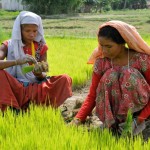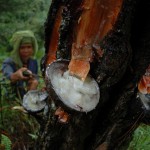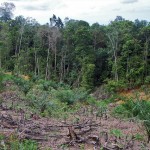
Dramatic warnings on forests and climate change in the New York Times
In two recent articles, the New York Times covered the topic of forests and climate change. The ability of the Amazon forest to soak up excess carbon dioxide is weakening over time, the New York Times reports, based on a study in Nature. That finding suggests that limiting climate change could be more difficult than expected.
A new paper in Nature Geoscience on the damaging effects of climate change on the famous aspen forests in the American West, gives much reason for concern. The study found that large aspen die-offs were a near-certainty only if greenhouse emissions were to continue at the runaway pace that has characterized the last decade, it says in the New York Times article. If global emissions are brought under control, the chances will improve that large stands of aspens could be preserved, the paper found.

Deutsche Welle presents community forestry in Nepal
Climate change, deforestation and land grabbing don’t only threaten Nepal’s rich biodiversity, but the economic wellbeing of millions of its citizens. Could community-managed forests hold the key?, asks an article in Deutsche Welle.
Financial Times lets Prince Charles speak up for tropical forests
Improved tree-monitoring technologies have revealed some of the world’s mightiest forests are in a more precarious state than thought, the Financial Times writes. But the same advances are also making it easier to understand how much forests can help to ward off climate change, according to a report prepared for the Prince of Wales’ International Sustainability unit.

Magazine Science shows how rubber plantations threaten biodiversity
The tires on your car threaten Asian biodiversity, is the catchy headline of an article in Science. It states that over the past decade, more than 2 million hectares of forests and farms worldwide have been turned into rubber plantations. The driver is growing demand, particularly for tires, which consume 70% of annual rubber production. But conservationists hope new efforts to grow rubber more sustainably could curb the ecological impact.
Smithsonian magazine shows that illegal cocoa farms pose danger to primates
Researchers have found that in Cote d’Ivoire’s national park protected areas are converted to agriculture, mainly for growing cacao. The land conversion leads to a loss in biodiversity of primates. The article mentions that cacao farming can be done through shaded agroforestry, a technique that does not remove all the native trees on a farm. It provides better revenues for farmers, preserves habitat for animals, promotes soil and nutrient retention and—best of all—produces better tasting chocolate. “Cocoa production and biodiversity are not mutually exclusive entities,” the magazine quotes the researchers.

(Bioversity International coordinates the Cocoa of Excellence Programme, funded through FTA.)
Also watch: CATIE: The end of chocolate
Jakarta Post uses WEF to draw attention to indigenous peoples
On the occasion of the East Asian Regional World Economic Forum (WEF) in Indonesia, an opinion piece in the Jakarta Post draws attention to the plight of Indonesia’s Orang Rimba communities in Jambi whose habitat has been increasingly narrowed since the 1980s.











